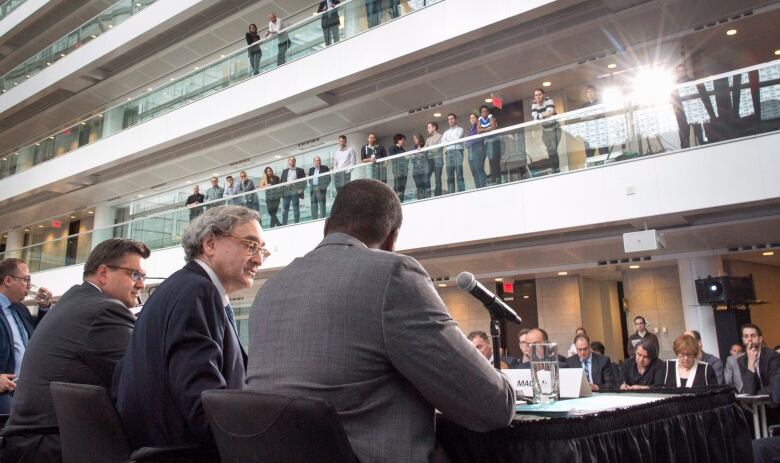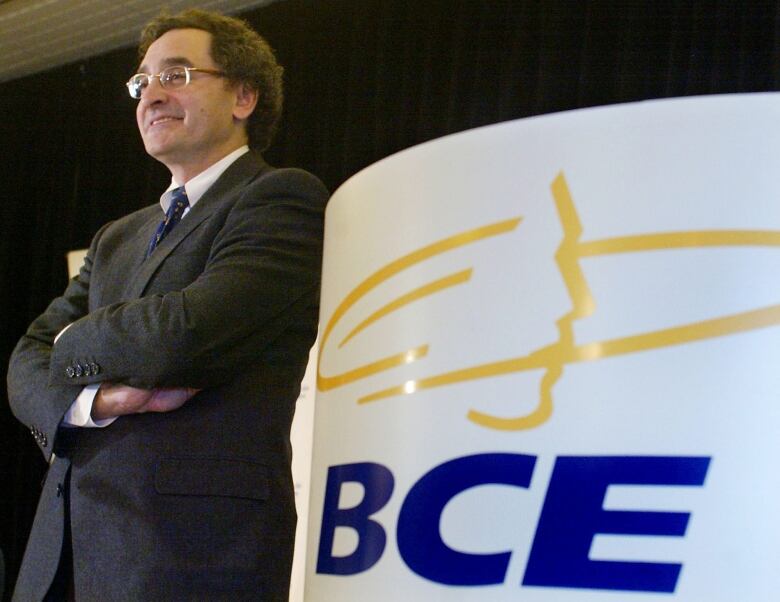Michael Sabia, from outsider to rainmaker
A look at the financial wizard who wants to revolutionize public transit in Montreal

MichaelSabiais seen by many in Quebec asthe man withthe golden touch.
When he took over the provincialpension fund, it was $40 billion in the hole. He'smanaged to grow its asset base by $130 billion since then.
Now for his next trick,Sabia is promising to finance the world's third largest light-rail networkat minimal costs to users and government.
The Caisse de dpt et placement du Qubeciscommitting$3 billion of the $5.5 billion needed to build alight-rail system for the greaterMontreal area, which willstretch 67-kilometres across 24stops.
"It's an ambitious project, that's obvious," Sabiatold Radio-Canada on Friday. "But I think here in Montreal, Quebec, and in Canada as well, we need some ambition."

Such grandiose plans for public infrastructurewould normally give pause to a business community that is conservative by nature. TheCaisse's reputation under Sabia, though, has quelled their anxieties.
"It's the rigour of their analysis," Michel Leblanc, the president of theBoard of Trade of MetropolitanMontreal,said when asked why he believed the Caisse would deliver on its promise.
Sabia, however,wasn't always depicted with a halo in Quebec media.His nomination as head of theCaissewas met withmuch grumbling back in 2009.
He was the first native-English speaker to head theinstitution that more than any otherembodiesQuebec Inc. Even though Sabia speaks flawless French, former Parti Qubcois premier Bernard Landry worried he would smuggle in his "Canadian national culture."
Paul Tellier, who was Sabia's boss at Canadian National Railway,warned his protege that he would be considered an outsider within Quebec's closely knit business class.
"I told him: you are not a member of Quebec Inc., you don't own a country place in the Eastern Townships, and you're not part of the inner circles," Telliersaid in a 2009 interview with the Financial Post.

Sabiawas born in 1953 in St. Catherines, Ont.His mother was a well-known feminist activist, his grandparents Italian immigrants.
He pursued undergraduate studiesat the Universityof Toronto, before completing a graduate degree in economics and politics at Yale.
Bespectacled with thick wavy hair, Sabiastill looks like he belongs on a university campus rather than in a corporate boardroom.
In the years after university, Sabia worked his way up the ranks ofthe federal civil service. It was there that he metTellier, who brought Sabia with him when he was given the task of privatizing CN.
From CN, it was onto Bell Canada's parent company BCE, where he was eventually appointed president and CEO in 2002.
His tenure atop BCE received mixed reviews.He was initially praised for a conservative management stylethat did much to stabilize the conglomerate after the investment decisionsmade by his predecessor turned sour.
But eventually shareholders grew restless as BCE's share price stalled. He nevertheless left the company witha$21-million package.

The Caisse itself was a mess when Sabia took over, parachuted in by then premier Jean Charest. The fund had lost roughly a quarter of its assets in 2008 thanks to a series of risky real estate investments.
Its impressive turnaround since thenis the stuff investment legends are made of.
By 2011, Sabia had returned the Caisse'stotalnet assetsto their pre-crisis level. In 2014, the fund recorded a stunning 12 per cent return on investment. It managed a still impressive 9.1 per cent return last year.
He's been lauded for emphasizing long-term investments and making the famously opaqueCaisse more transparent.
More recently,Sabia has been intent on growing the fund's global holdings, especially in infrastructure.Nearly54 per cent of its exposure is now outside Canada.
But by far Sabia's biggest coup to date is the plan for a light-rail system in Montreal, which has the potential to reshape how millions of people commute daily.
The groundwork for the deal was laid last year, when the Quebec government agreed to give the Caisse new powers to invest and control major infrastructure projects in Quebec.
It appears to be a win-win situation. The cash-strapped government gets to offload the cost of massive public works projects, while the Caisse grows its holdings in a sector it considers a priority.
It's the kind of arrangement, though, that has political interference written all over it. But again, Sabia's reputation has muted the concerns of many observers.
"He's not some cowboy coming in from the private sector and who manages the Caisse based on political contacts," Pierre Fortin, an economics professor atUniversit du Qubec Montral, told Radio-Canada recently.
"I think we can trust him at least to launch its involvement in infrastructure."












_(720p).jpg)


 OFFICIAL HD MUSIC VIDEO.jpg)
.jpg)



























































































